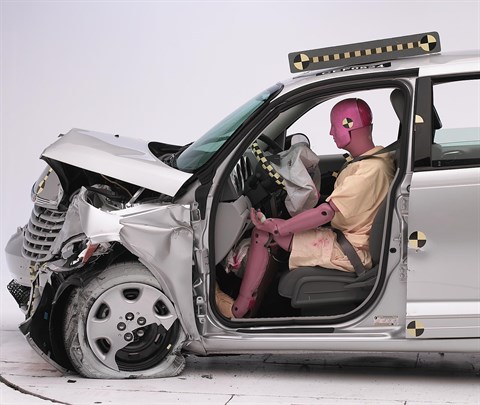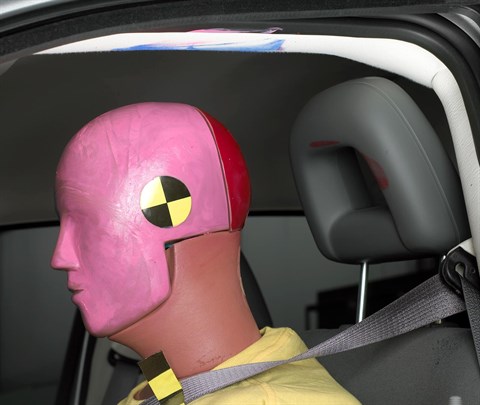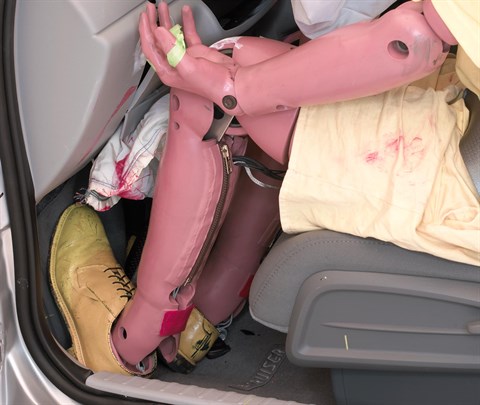Moderate overlap front: original test
Rating applies to 2006-10 models
Tested vehicle: 2008 Chrysler PT Cruiser LX wagon
The Chrysler PT Cruiser was introduced in the 2001 model year. Beginning with 2006 models, an inflatable knee bolster was added to the lower instrument panel designed to minimize knee injuries to drivers in frontal crashes. The car was discontinued after the 2010 model year.
| Evaluation criteria | Rating |
|---|---|
| Overall evaluation | |
| Structure and safety cage | |
| Driver injury measures | |
| Head/neck | |
| Chest | |
| Leg/foot, left | |
| Leg/foot, right | |
| Driver restraints and dummy kinematics | |

Action shot taken during the frontal offset crash test.

The dummy's position in relation to the steering wheel and instrument panel after the crash test indicates that the driver's survival space was maintained well.

Smeared greasepaint indicates where the dummy's head hit the roof rail during rebound. Head acceleration from this hit was low.

Forces on the lower left leg were high enough to indicate the possibility of injuries.
Head restraints & seats
Seat type: Manual cloth seats
| Overall evaluation | |
|---|---|
| Dynamic rating | |
| Seat/head restraint geometry |
About the head restraint & seat test
Currently, IIHS tests apply only to front seats.